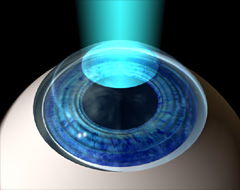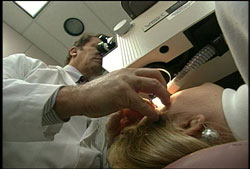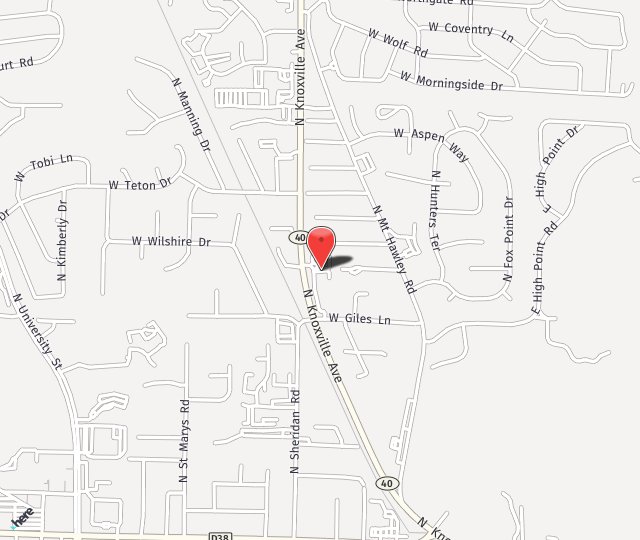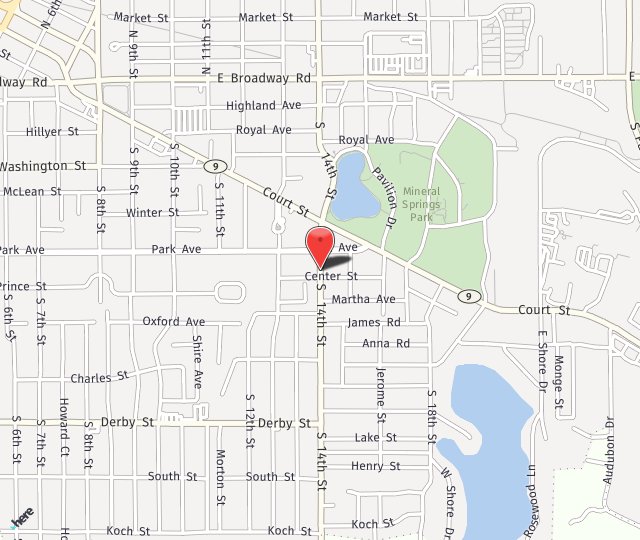PRK was the first procedure performed using the Excimer laser. It corrects vision by reshaping the cornea. The difference between LASIK and PRK is that with LASIK a corneal flap is created and the laser is applied to the inner tissue of the cornea. With PRK, the epithelium (or outer skin of the cornea) is removed and a laser is applied to the surface of the cornea. PRK can be used to correct low to high levels of nearsightedness, farsightedness and astigmatism.

PRK

LASIK
To treat nearsightedness, the steep cornea is made flatter by removing tissue from the center of the cornea. This moves the point of focus from in front of the retina to directly on the retina.
To treat farsightedness, the flat cornea is made steeper by removing tissue outside of the central optical zone of the cornea. This moves the point of focus from behind the retina to directly on the retina.
To treat astigmatism, the cornea is made more spherical -- like a basketball instead of a football. This eliminates multiple focusing points within the eye and creates one point of focus on the retina. Astigmatism can be treated at the same time as nearsightedness and farsightedness.
PRK is for those who:
- want to reduce or eliminate their dependence on glasses or contacts
- are over 18 years of age
- have had a stable eye prescription for at least one year
- have no health issues affecting their eyes
- have corneas too thin for LASIK
- have large pupils

You will arrive at the laser center about an hour prior to your procedure. Once you have been checked in you may be offered a sedative to help you relax. You will then be prepared for surgery. The area around your eyes will be cleaned and a sterile drape may be applied around your eye. Anesthetic eye drops will be used to numb your eyes; no injections or needles will be used. When your eye is completely numb, an eyelid holder will be placed between your eyelids to keep you from blinking during the procedure.
Next, your doctor will remove the epithelium, a thin layer of protective skin that covers the cornea. You will be asked to look directly at a target light while the laser reshapes your cornea. The laser will be programmed with the information gathered in your pre-operative exam. The laser treatment will be completed in less than a minute or two, depending on the amount of correction needed.
Following your procedure, your eye(s) will be examined with a slit lamp microscope. Your eyes may be shielded for protection. Your vision may be blurry or hazy for one to five days. You will experience some discomfort as the epithelium heals and covers the treated area. Eye drops, pain medication and possibly a protective contact lens can be used to minimize this discomfort. Most patients resume normal activities within one to three days. Vision can fluctuate for up to six months.

Realistic Expectations:
The decision to have PRK is an important one that only you can make. The goal of any refractive surgical procedure is to reduce your dependence on corrective lenses. However, we cannot guarantee you will have the results you desire. The vast majority of our patients are extremely happy with their vision after PRK and can do most activities without dependence on corrective lenses.

PRK is a safe, effective and permanent procedure, but like any surgical procedure, it does have some risks. After PRK, almost everyone experiences some visual side effects. These visual side effects are usually mild and temporary and have a tendency to diminish over time. But there is a slight chance that some of these side effects won’t go away completely, including light sensitivity, glare and halos. Serious complications to PRK are extremely rare.
PRK is a safe, effective and permanent procedure, but like any surgical procedure, it does have some risks.
Since everyone heals somewhat differently, some patients may overreact to the procedure and some may underreact resulting in over corrections and under corrections. Once the eye has stabilized (3 to 6 months) you and your doctor can discuss whether a re-treatment could help fine-tune your vision if you are over or under corrected.


After a thorough eye exam, you and your doctor will determine if PRK is an option for you. If you are a good candidate, you will be given additional information about the procedure that will allow you to make an informed decision about whether to proceed. Be sure you have all your questions answered to your satisfaction. If you would like additional information about risks and complications now, you may download our "consent for surgery" form by going to Patient Forms.
Alternatives to PRK:
PRK is not the only surgical procedure designed to correct nearsightedness, farsightedness and astigmatism. To learn about other procedures go to the surgical and laser vision correction procedures section of our Web Site. You may also choose to make an appointment or request additional information to learn more about this exciting procedure.
We offer a number of finance and payment options. It is easy to apply online before you schedule an appointment.


